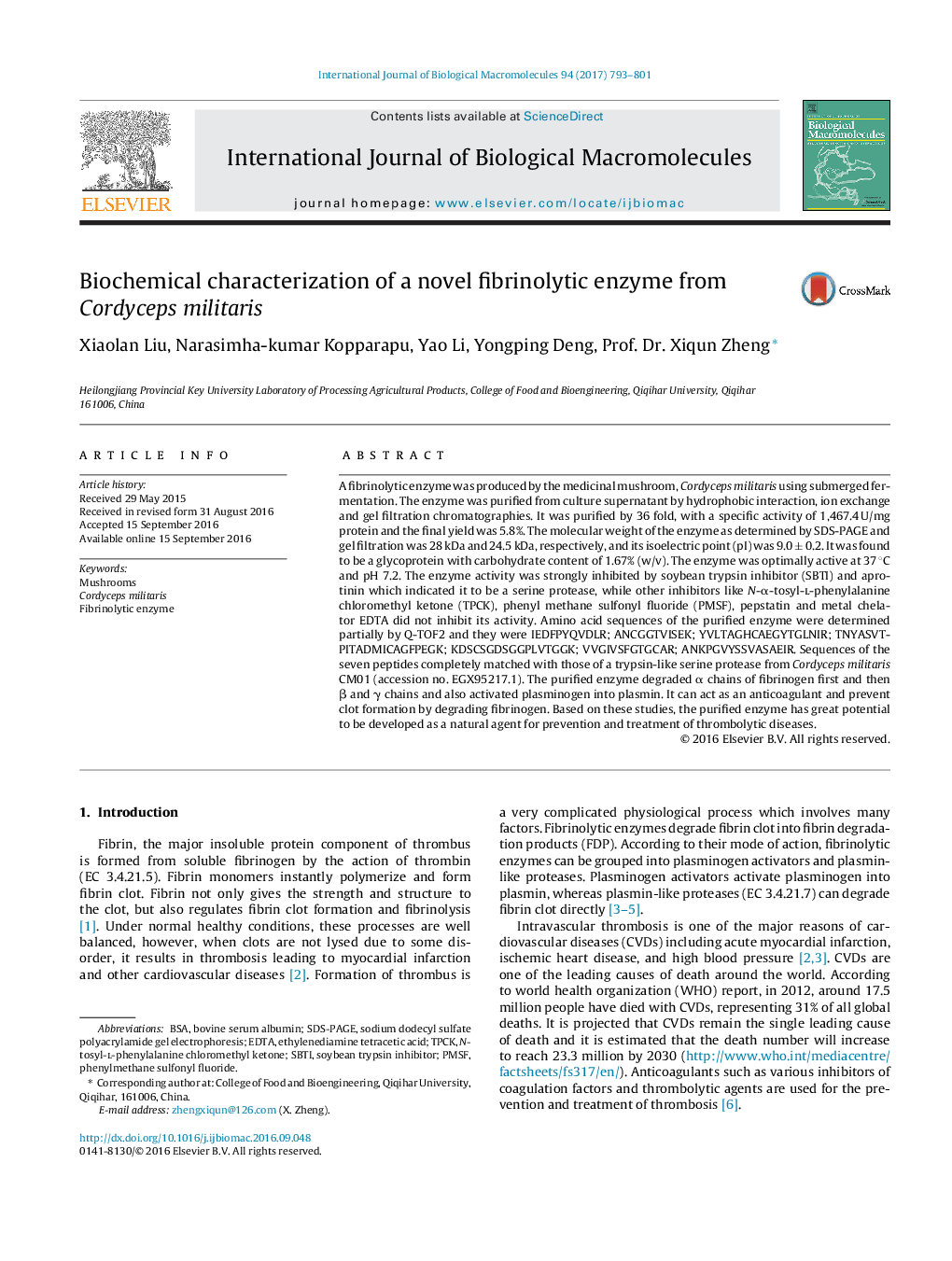| Article ID | Journal | Published Year | Pages | File Type |
|---|---|---|---|---|
| 5512352 | International Journal of Biological Macromolecules | 2017 | 9 Pages |
A fibrinolytic enzyme was produced by the medicinal mushroom, Cordyceps militaris using submerged fermentation. The enzyme was purified from culture supernatant by hydrophobic interaction, ion exchange and gel filtration chromatographies. It was purified by 36 fold, with a specific activity of 1,467.4 U/mg protein and the final yield was 5.8%. The molecular weight of the enzyme as determined by SDS-PAGE and gel filtration was 28 kDa and 24.5 kDa, respectively, and its isoelectric point (pI) was 9.0 ± 0.2. It was found to be a glycoprotein with carbohydrate content of 1.67% (w/v). The enzyme was optimally active at 37 °C and pH 7.2. The enzyme activity was strongly inhibited by soybean trypsin inhibitor (SBTI) and aprotinin which indicated it to be a serine protease, while other inhibitors like N-α-tosyl-l-phenylalanine chloromethyl ketone (TPCK), phenyl methane sulfonyl fluoride (PMSF), pepstatin and metal chelator EDTA did not inhibit its activity. Amino acid sequences of the purified enzyme were determined partially by Q-TOF2 and they were IEDFPYQVDLR; ANCGGTVISEK; YVLTAGHCAEGYTGLNIR; TNYASVTPITADMICAGFPEGK; KDSCSGDSGGPLVTGGK; VVGIVSFGTGCAR; ANKPGVYSSVASAEIR. Sequences of the seven peptides completely matched with those of a trypsin-like serine protease from Cordyceps militaris CM01 (accession no. EGX95217.1). The purified enzyme degraded α chains of fibrinogen first and then β and γ chains and also activated plasminogen into plasmin. It can act as an anticoagulant and prevent clot formation by degrading fibrinogen. Based on these studies, the purified enzyme has great potential to be developed as a natural agent for prevention and treatment of thrombolytic diseases.
